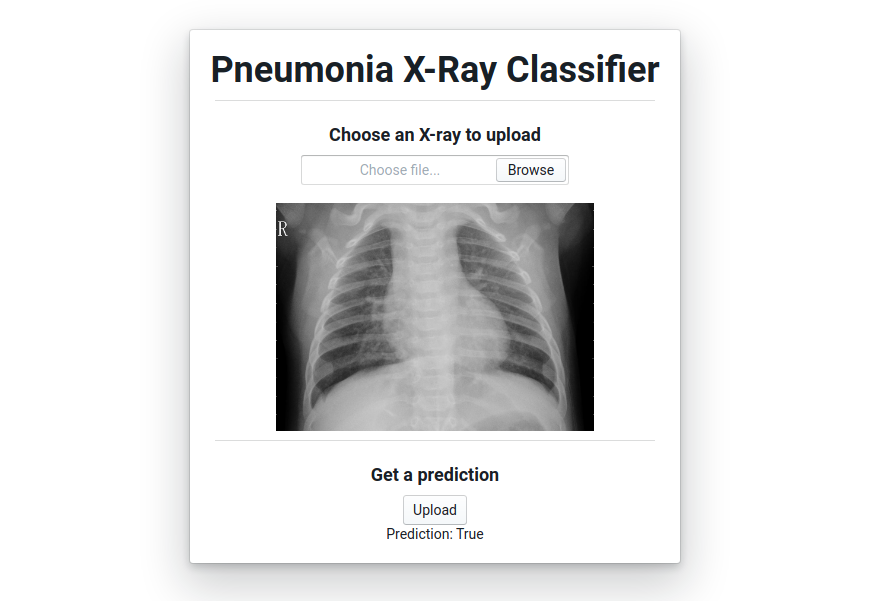Pneumonia Xray Classifier
Purpose: Personal Project
Project Type: Python, Scikit-Learn, Flask, React
Date: Fall, 2020
A machine-learning image classifier that classifies input X-ray images of lungs into those that have pneumonia and those that do not.
This was one of the first projects in machine learning which I decided to make while going through Aurélion Géron's "Hands-On Machine Learning with Scikit-Learn, Keras & TensorFlow" textbook. It's also the first time I've built an API using Python and Flask on Heroku which a front-end React app hosted on Netlify makes requests to.
This small project was a good chance to follow along to a similar one from a textbook (classifying handwritten numbers) and expanding it to a different data set, then finally implementing the model into a usable front and backend.

Machine Learning Model
The model was made as a simple binary image classifier with Scikit-Learn. It takes input X-ray images and converts them to grayscale and a lower resolution (128 pixels by 128 pixels). This is then encoded as a matrix, and fed into a Stochastic Gradient Descent classifier (The SGDClassifier class from Scikit-Learn).
For evaluation, cross-validation was manually implemented with stratified sampling to make three folds. The model has a big variance with results of 96.7%, 87.1% and 95.1% which is understandable given the naive nature of the classifier being used.
With a confusion matrix, one gets [[1246, 95], [251, 3341]] which again seems fine given the simple model used.
The Backend
With the model being made in Python, a Flask API server was set up to load in the previously trailed model as well as take in an input Xray image, process it to be the correct grayscale and size, and make a prediction with it. This process was hosted on Heroku, and was also the first time I'd worked with both creating an API in Python with Flask and publishing it on the internet using Heroku.
The Frontend
The frontend was made with React and Blueprint. Since this was relatively simple, I decided to try to use Blueprint, as it seems to be highly recommended for data dashboards and similar projects. In the future I might look into making more complicated data-science projects with a frontend utilizing Blueprint given its relative ease at implementing the relevant elements.